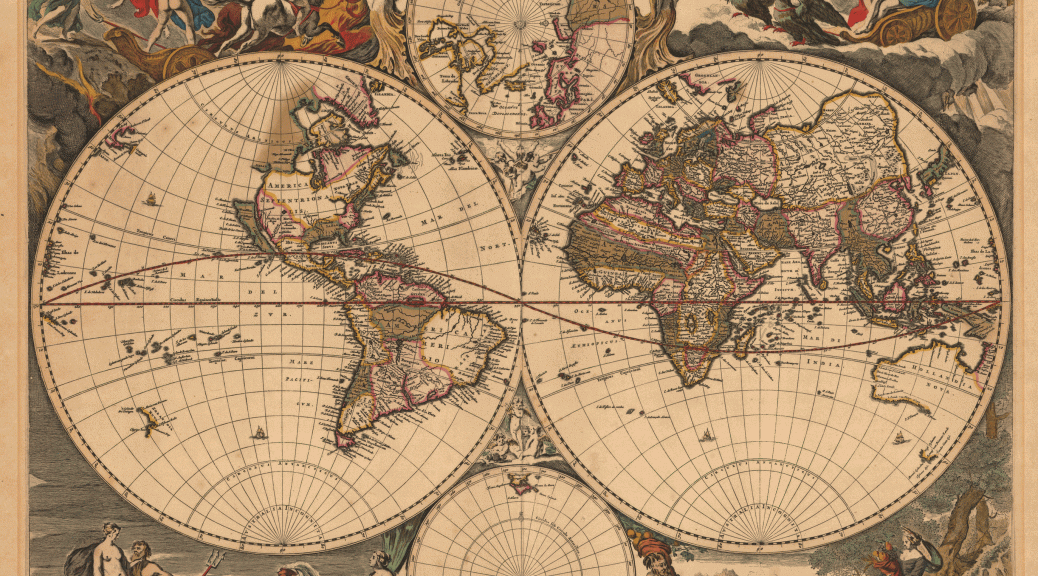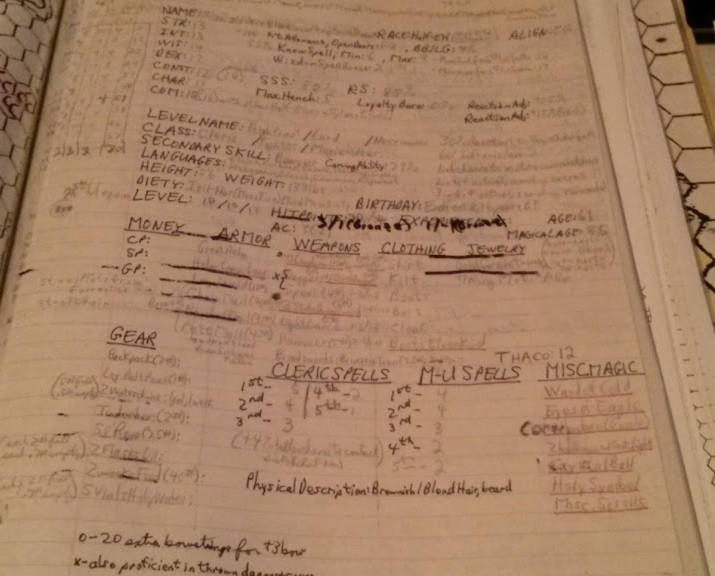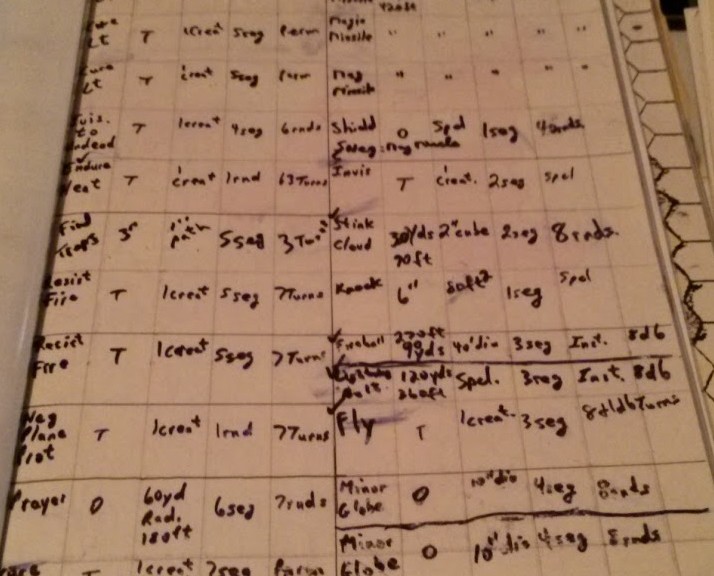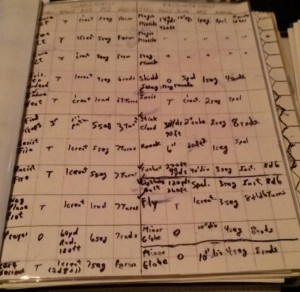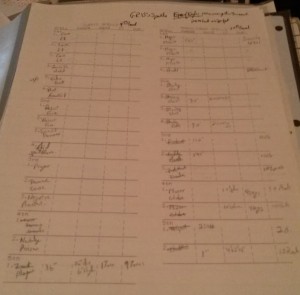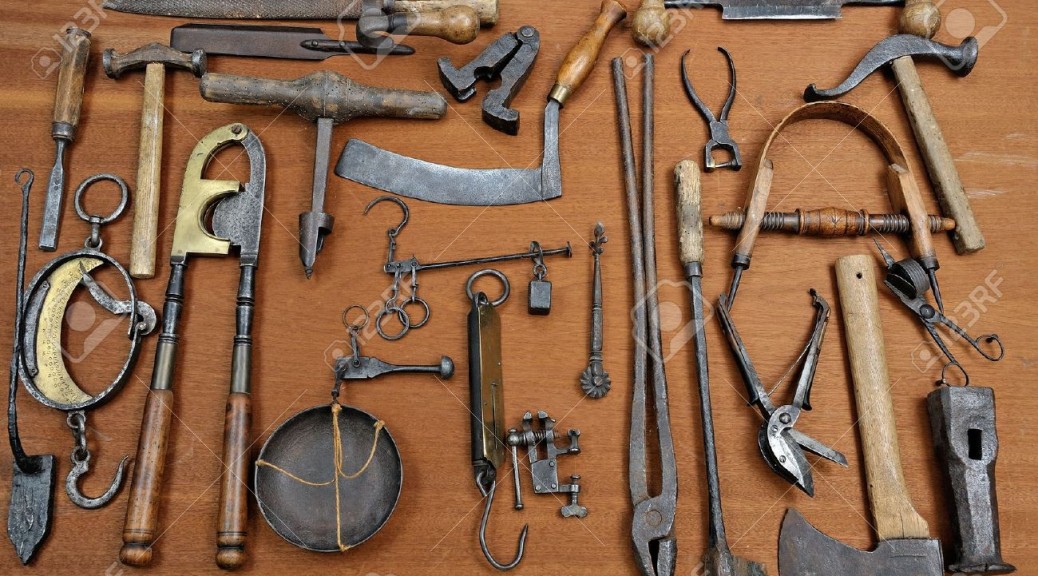There are two types of old school roleplayers. Those who lived it back in the day, and those who are discovering it today.
Back in the day, everything was pen, pencil, paper, and maybe an electronic calculator. Calculators were very expensive back then.
We could create entire worlds from our imagination and some notes and stats on notebook paper and a quick map on graph paper.
We could stuff sheets of graph paper into a spiral notebook and hope we didn’t lose them. Or we could get a three ring binder and organize our notes. We’d use a hole punch, to punch one hole at a time, if any paper we used didn’t have holes. Sheet protectors could be used for maps to make sure they were not damaged.
We made our own character sheets on notebook paper, using narrow ruled or college ruled paper to get more on the page. Notebooks to track a player’s character information could quickly grow to include tracking spells and items, castles and troops. I made a sheet to track spell slots that I could put in a sheet protector and write the spell for the slot in dry erase marker, or grease pencil. I then either erased it, or checked off that I used it, if I planned to use it again.
When computers were first affordable enough to have in the home, some of us made dice rolling programs to generate a thousand kobolds in a few seconds.
When word processors became more usable, we could type up our notes, and make our own character sheets, and other notes that we as players or DM could use. Does anyone remember the DOS version of WordStar? Italics and bold remind me of how to do it in HTML.
Spreadsheets, word processors, scripting languages, programmable text editors, and more all have a use. Now many of them are all online and shared storage of Google Drive, and Communities.
As new tools came along, we could put them to use too. 10 cent copies at the town library or college library, or access via a job, allowed lots of copies of our hand drawn maps to note different information. One for terrain, one for monster locations, etc.
As computers improved in performance and tools became available that we could afford, we did more with computers. The availability of free and open source software (FOSS) opened a lot of doors. A lot of FOSS has neared or equaled commercial software. We have GIMP, Scribus, Hexographer, and many others for various purposes. Such tools and scanners and cell phone cameras have enabled us to take our original old school materials and make a record of it. We can also share our original stuff with the world, or just make it available for a virtual session via the internet.
The new tools we have, allow us to do a lot of things with our old school methods and ideas. We can share them with the world, and can game with people from across the globe. In my weekly Wednesday night AD&D game our DM alternates between two states because his work is in one location and his family in another. I am in Michigan, one player is in Florida, another is in England, and we have a few more, all in various U.S. locations.
Playing over the internet has one weakness of in person play. No electricity, or no internet, or computer problems, or provider problems, and you can’t play. With in person play, just like back in the day, you don’t need electricity. You have your notes, manuals, dice, and a flashlight, candle, lantern, or camp fire, and you can game. For that aspect alone, in person play rules. In person play also rules because you can see player’s faces, and body language, and you have more time to get to know each other, than people across the planet you only interact with once a week for four hours. I feel I know them, but I wouldn’t know them if I passed them on the street. We don’t use our cameras in Google Hangouts to help minimize lag issues.
The one way online play rules, is that you can easily find a group to play with, if you know where to look. If you live in a small town and don’t know the right people, it can be hard to find a group to game with. So you have to find a FLGS or go to a local con and meet the local people. This is an issue if you are new to an area, or are new to RPG’s.
For me, if I still lived within an hour of where I grew up, I could get together frequently with many of the original gang I started with. Since I have been 13 years in Michigan, and only got serious about getting back into playing the last few years, I have found that the resources for finding local players for in person gaming, like Pen and Paper Games, and others like it, aren’t helpful if no one is interested in your version. It looks like it would work great, if you lived in or near a major city, like Detroit, or Chicago, where the numbers are there.
However, once you find people who like your style of game, you are in a circle of knowledge that lets you dig deeper to try to find a group for your own local game, whether as a player or a DM.
Or you can have kids and game with them, until their lives get complicated with their own kids, or they move out of state. Then the cycle of looking starts again….

